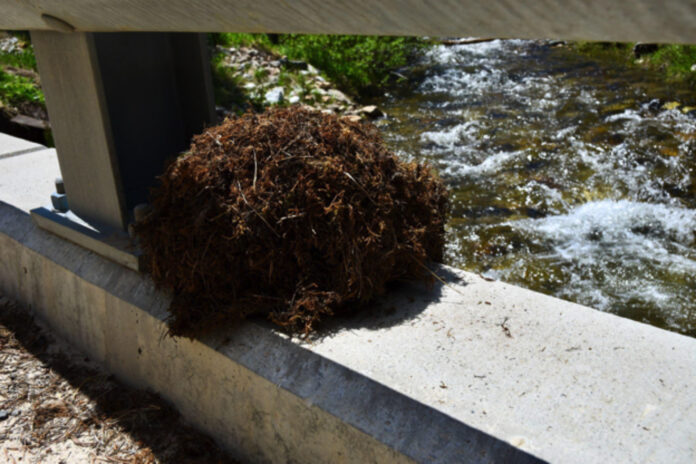
BY LARRY BARNES
Our bioregion is sleeping under winter’s white blanket, but already audible signs of spring are in the air. I heard them on January 13th coming from beneath a bridge over the Big Wood River. An American dipper had begun to sing. Some combination of increasing daylight and hormonal changes had probably caused this individual to take time out from foraging in the icy waters for food and broadcast its hopes over the white noise of its ice water world.
We rightly associate bird song with spring. As Earth orbits the sun, more light sets the table with all the ingredients needed for the coming banquet. Ice melts, the land warms, sunlight ignites photosynthesis, buds swell and sprout leaves, insects come alive, and it becomes worthwhile for birds to migrate north toward the land of long days. A vernal abundance of food is coming and for many birds the benefits of reproducing here exceed the costs of migration. But the American dipper is largely non-migratory and begins its breeding season while snow covers the land. Why get started so far ahead of its feathered kin?
Five species of dippers occur on Earth, two in the Old World and three here in the New World. They are the only members of their family and their genus – Cinclus. The dippers are members of the largest order of birds, the Passeriformes, which includes about 8,600 species, or 60% of all birds. All five dipper species evolved from one version, probably all sharing the same unusual characteristics. Dippers are the only full-time aquatic members of their order and it follows that they have evolved special adaptations as a result.
Dipper bones are more solid than other bird species, most of whom have famously light-weight hollow bones. This increased density may offset their extreme buoyancy thanks to an oversized uropygial gland – the source of the oil that makes feathers waterproof. While “flying” underwater, a dipper reflects a silver sheen from a layer of air trapped against its densely feathered body. Flaps on their nostrils close when they submerge. And their blood’s oxygen-carrying capacity exceeds that of their relatives.
The American dippers’ world revolves around fast-moving clear streams that team with dragonfly and caddisfly nymphs, which they capture underwater like a tiny, frenetic diving duck. They build their dome-shaped nests of moss on streamside cliffs or beneath bridges. The sexes appear alike and both parents feed the young, but the female does the incubating. It takes about 38 days from egg-laying to chicks leaving the nest.
So why the rush? Why start the breeding season in January rather than in April or May, like their more sensible bird cousins? The reason probably includes the fact that a dipper’s pantry is never empty. Streams that flow year-round always harbor aquatic insects and tiny fish. Also, dippers often produce two clutches per season; get an early start if you want to maximize your Darwinian fitness. Finally, dipper nests are sometimes built close to the stream, and nature would favor parents that nest early, before a June flood might wash their babies down the river.
Larry Barnes retired from 26 years as a biology teacher at Wood River High School and is now transitioning to full-time amateur exploration of the natural world.
